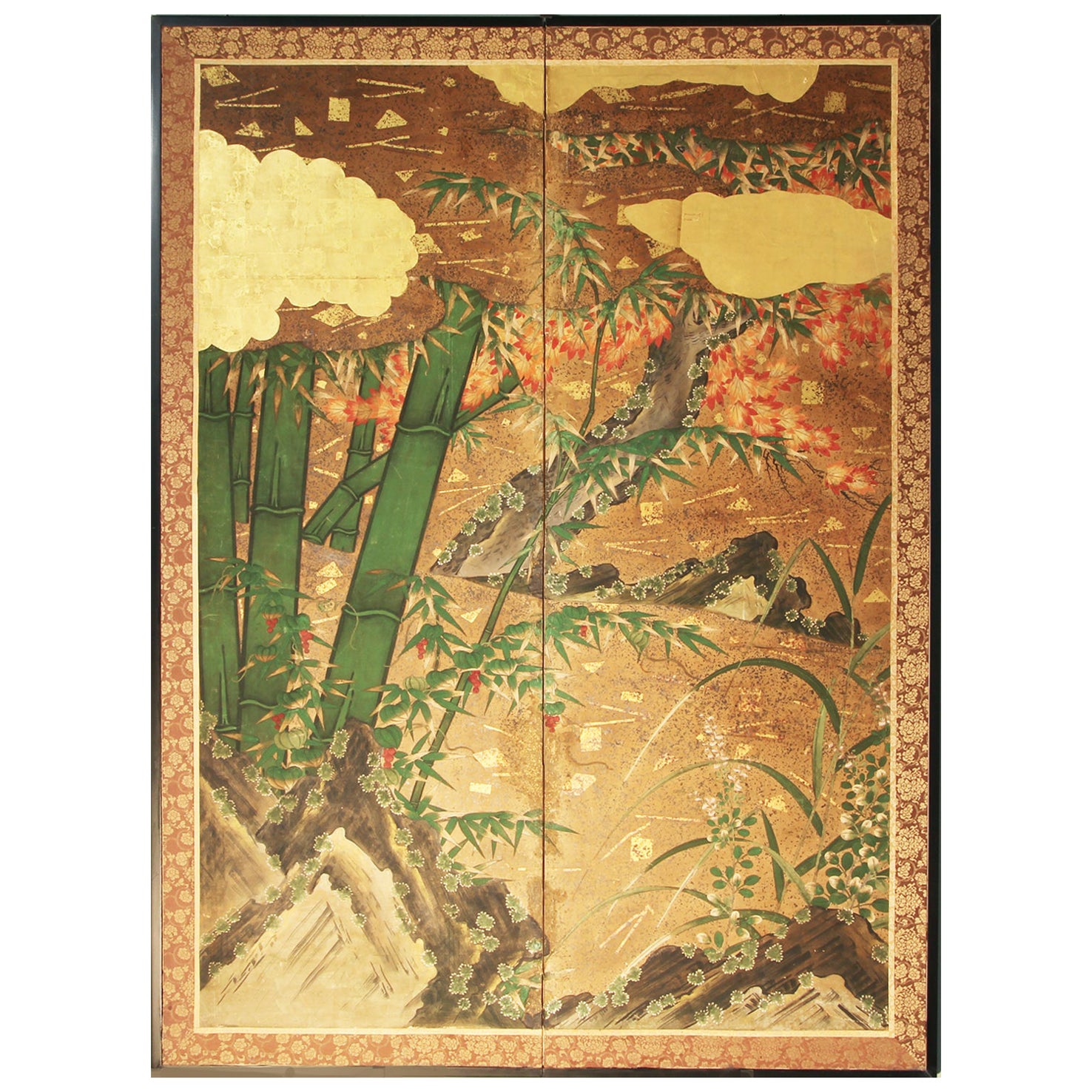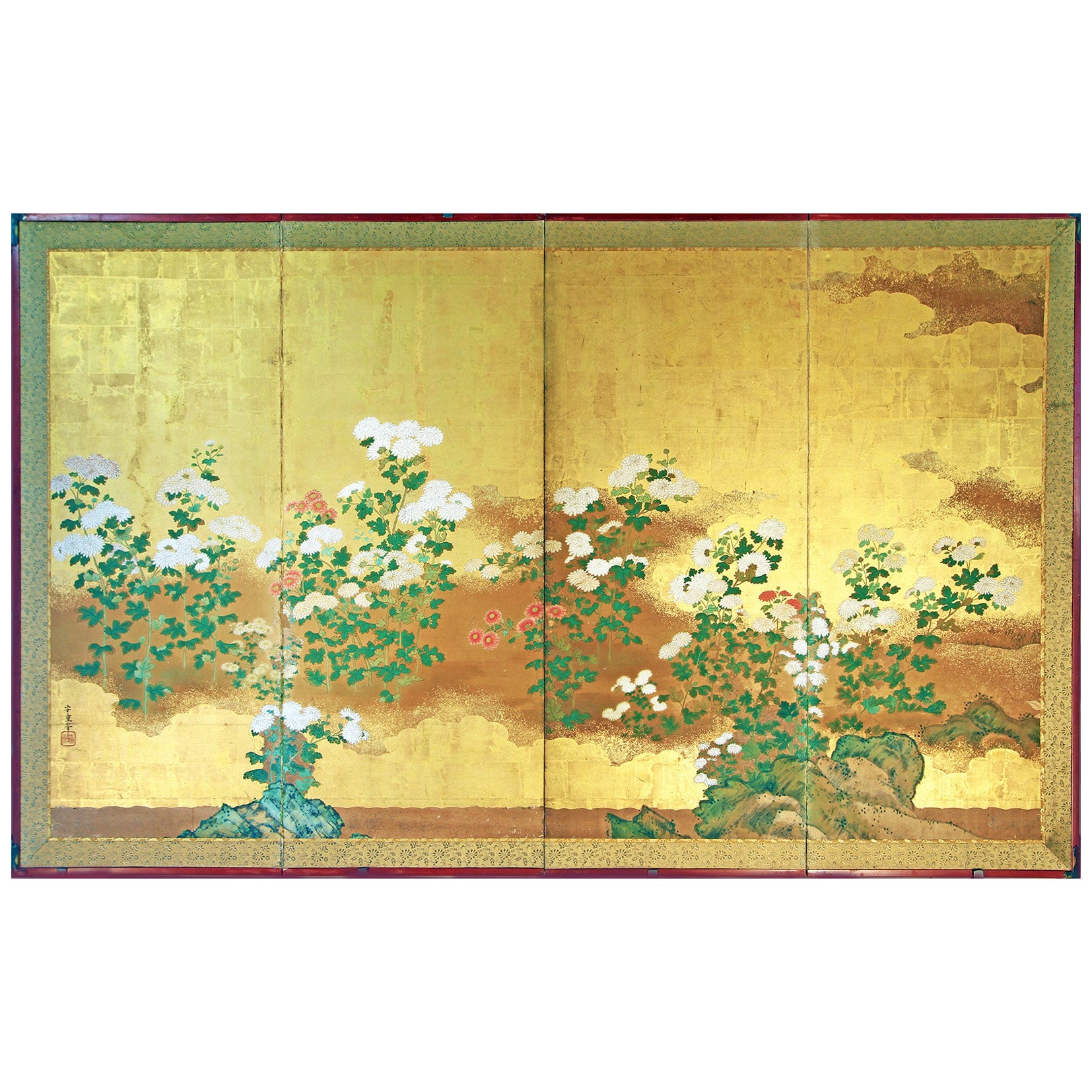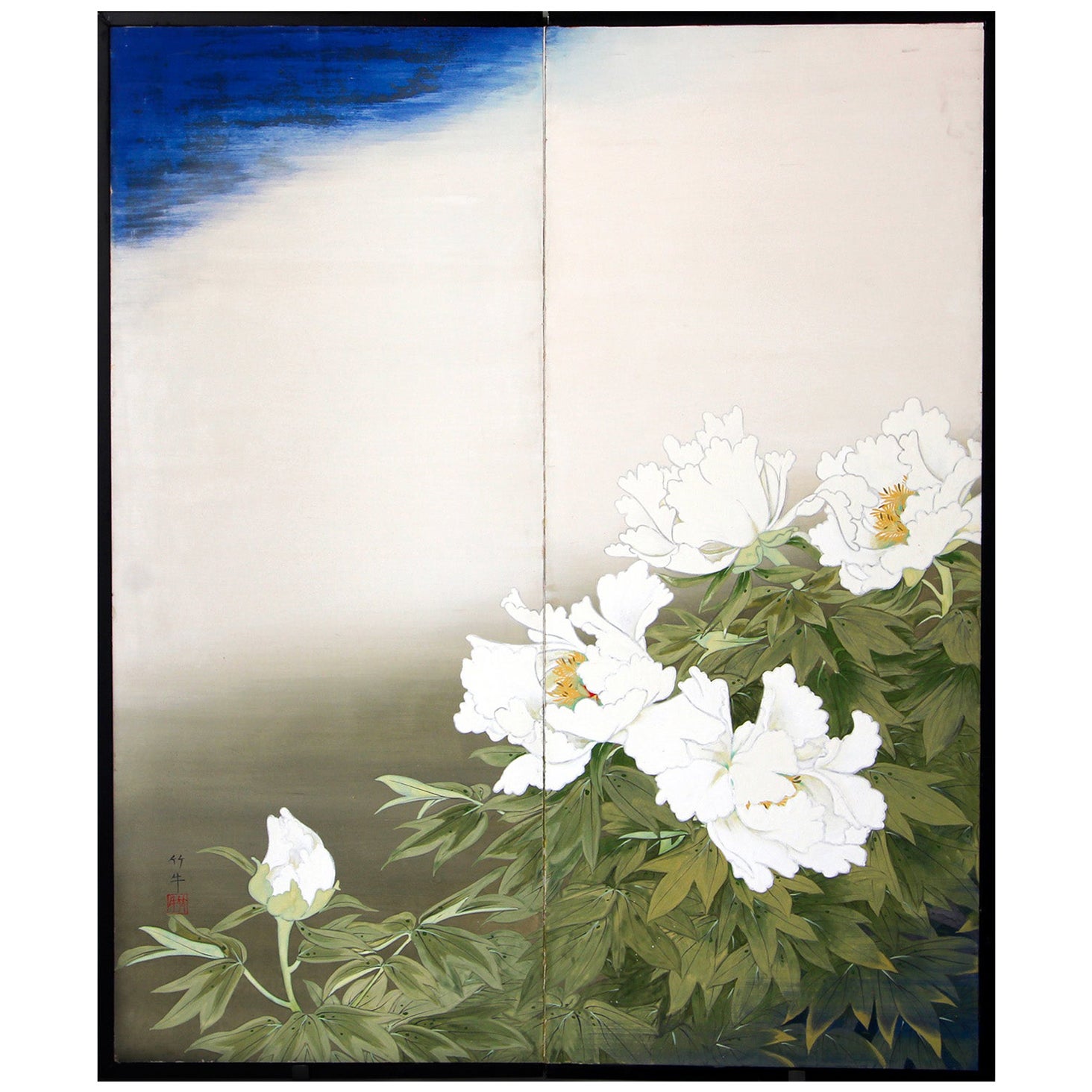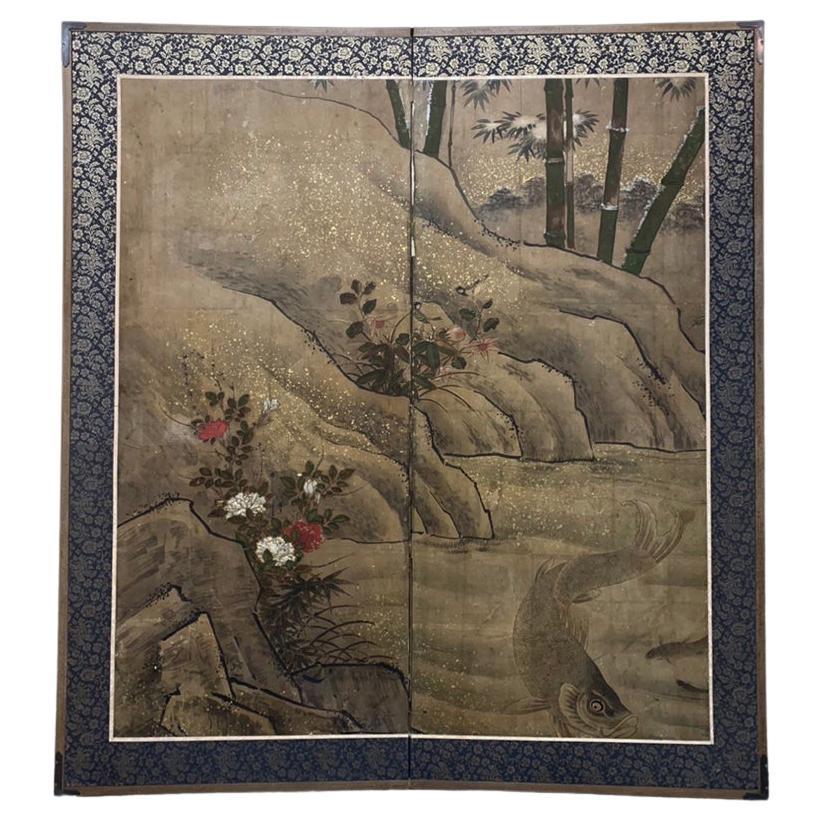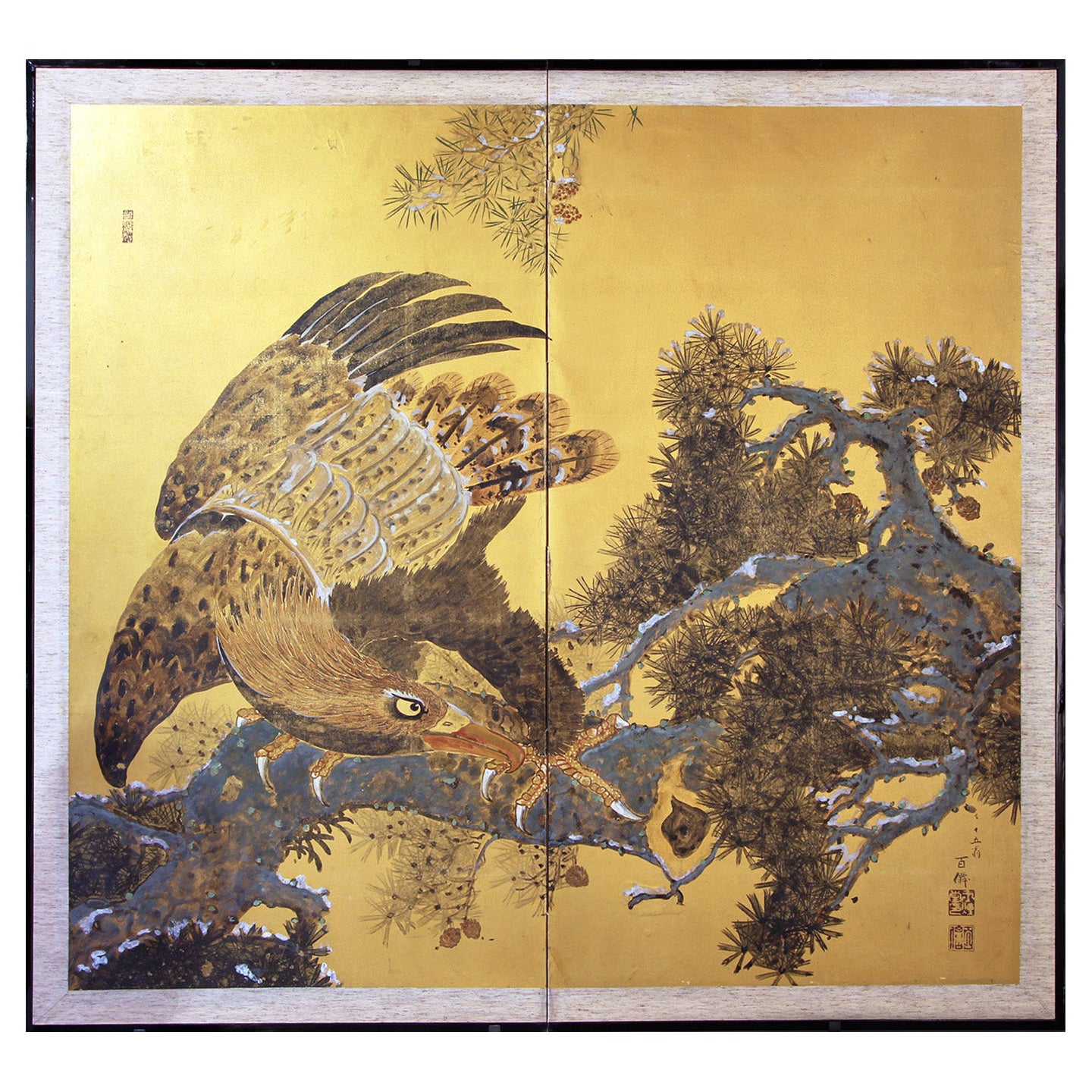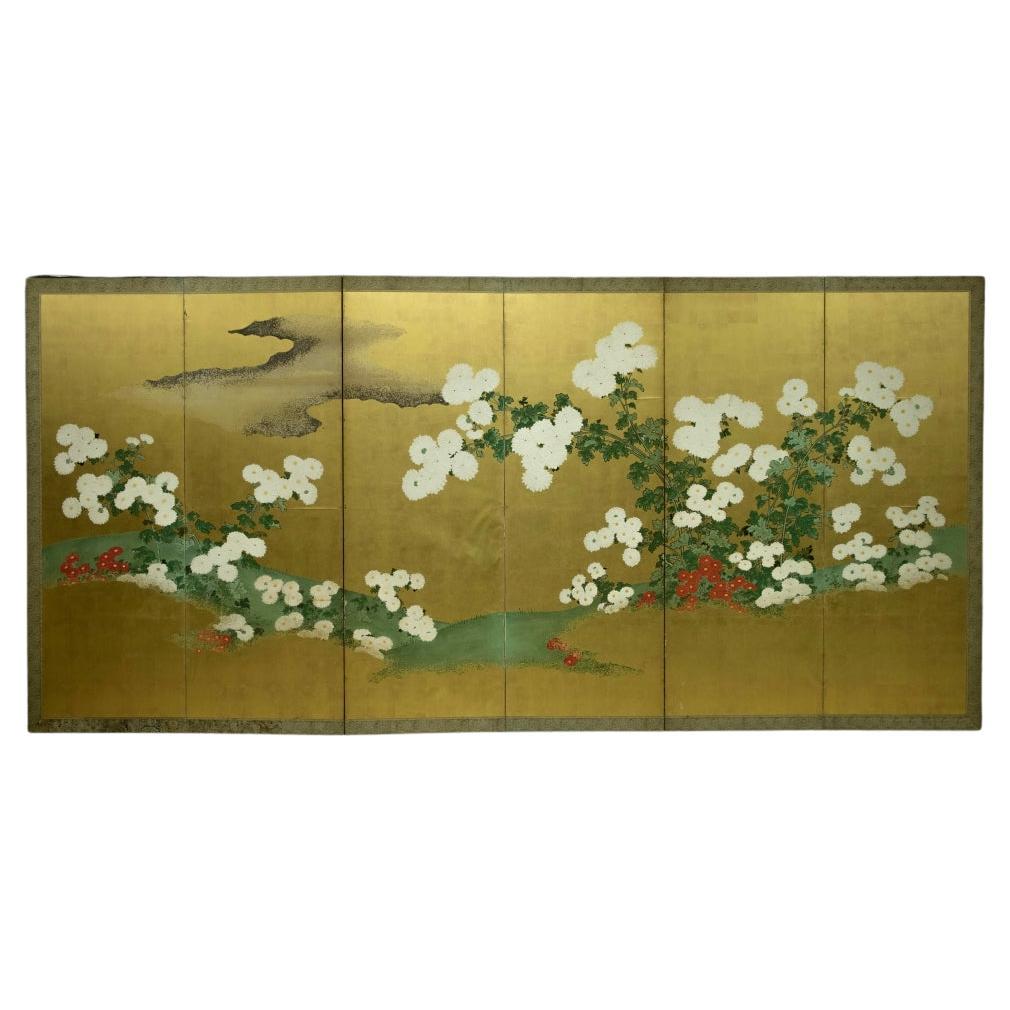Want more images or videos?
Request additional images or videos from the seller
1 of 7
Two-panel screen of " Rinpa School"
About the Item
Floral scene of a Rimpa School garden with polychrome chrysanthemum flowers.
Two-panel screen painted in pigment on gilded rice paper of beautiful size and well preserved.
Bold colors and strong design elements combined make it a screen of intense decorative effect.
Lucio Morini guarantees the authenticity and provenance of the work. The seriousness of the antique dealer is certain thanks to the long experience of over 40 years of activity at the service of many customers in Italy and around the world.
- Creator:Japanese Studio (Artist)
- Dimensions:Height: 59.85 in (152 cm)Width: 56.7 in (144 cm)Depth: 0.79 in (2 cm)
- Style:Showa (Of the Period)
- Materials and Techniques:
- Place of Origin:
- Period:
- Date of Manufacture:1950 -59
- Condition:Wear consistent with age and use.
- Seller Location:Brescia, IT
- Reference Number:1stDibs: LU5628237739112
About the Seller
5.0
Recognized Seller
These prestigious sellers are industry leaders and represent the highest echelon for item quality and design.
Established in 1981
1stDibs seller since 2021
14 sales on 1stDibs
Typical response time: 4 hours
- ShippingRetrieving quote...Ships From: Brescia, Italy
- Return PolicyA return for this item may be initiated within 10 days of delivery.
More From This SellerView All
- Edo, Japanese Screen Two Panels Rinpa SchoolBy Japanese StudioLocated in Brescia, ITLandscape with Flowers and Bamboo by an 18th century painter of the Rinpa school, two panels painted in ink on gold leaf and vegetable paper. The flowers...Category
Antique 18th Century Japanese Edo Paintings and Screens
MaterialsGold Leaf
- Four-panel golden screen of Rinpa schoolBy Japanese StudioLocated in Brescia, ITJapan, mid-Edo period. Floral scene of a Rimpa School garden with polychrome chrysanthemum flowers. Four-panel screen painted in pigment on rice paper and gold leaf of beautiful size...Category
Antique Late 18th Century Japanese Edo Paintings and Screens
MaterialsGold Leaf
- Two-panel screenBy Japanese StudioLocated in Brescia, ITModern two-panel screen with white peonies. Hand-painted on vegetable paper. Very fresh work that is easy to incorporate into design furniture. Very good state of preservation, sig...Category
20th Century Japanese Showa Paintings and Screens
MaterialsWood, Paper
- Japanese screen two-panelBy Japanese StudioLocated in Brescia, ITEagle on a pine branch with traces of white snow. A rare subject for this mid-century two-panel screen, painted in mineral pigments on gilded paper. The screen is a nice size and is ...Category
20th Century Japanese Showa Paintings and Screens
MaterialsPaper
- Six-Panel Japanese ScreenBy Japanese StudioLocated in Brescia, ITSix-panel screen of Rinpa school, painted with mineral pigments and gofun on vegetable paper and silver leaf.Category
Antique Early 19th Century Japanese Edo Paintings and Screens
MaterialsSilver Leaf
- Six-panel gold leaf screenBy Japanese StudioLocated in Brescia, ITLarge Japanese six-panel screen, ink, color, gold, and gold leaf on paper, depicting three scenes from Genji monogatari (The Tale of Genji), the vignettes punctuated by raised golden...Category
Antique Early 19th Century Japanese Edo Paintings and Screens
MaterialsGold Leaf
You May Also Like
- 17th Century Rinpa School Two-Panel Screen with KoiBy Rimpa SchoolLocated in Fukuoka, JP17th-18th Century Rinpa School Two-Panel Screen Period: 17th-18th century Size: 140 x 125 cm (55 x 49 inches) SKU: PTA43 This beautiful two-panel screen is a classic example of the...Category
Antique 17th Century Japanese Edo Paintings and Screens
MaterialsWood, Paper
- Late Edo Period Rinpa School Chrysanthemum Blossom ScreenBy Rimpa SchoolLocated in Fukuoka, JPLate Edo Period Rinpa School Chrysanthemum Blossom Screen Period: late Edo, early 19th century Size: 364 x 172 cm (143 x 67 inches) SKU: PTA13 This exquisite late Edo period Rinpa ...Category
Antique 18th Century Japanese Edo Paintings and Screens
MaterialsPaper
- Japanese Two Panel Screen Moon ViewingLocated in Hudson, NYJapanese two panel screen: Moon Viewing, painting of two noblewomen admiring the full moon outdoors. Extremely sophisticated execution of painting ove...Category
Vintage 1970s Japanese Showa Paintings and Screens
MaterialsSilk, Wood, Paper
- Japanese Two-Panel Screen Spring FlowersLocated in Hudson, NYA vibrant celebration of spring using a colorful ensemble of coxcomb, irises, lilies, hybiscus, and a blossoming cherry tree. Great examples of "tarashikomi" or "painting-in", a Rim...Category
Vintage 1930s Japanese Showa Paintings and Screens
MaterialsSilk, Paper
- Japanese Two Panel Screen: Irises on GoldLocated in Hudson, NYJapanese Two Panel Screen: Irises on Gold Showa period (1926 - 1989) painting, beautifully mounted with silvered hardware. Seal reads: Eishun. Mineral pigments on gold with a silk ...Category
20th Century Japanese Showa Paintings and Screens
MaterialsBrass
- Japanese Two Panel Screen Peonies In the MistLocated in Hudson, NYJapanese Two Panel Screen: Peonies In the Mist. Showa period (1926 - 1945) painting in oil on canvas of peonies with gold and silver dust clouds. Signature reads, Seishu.Category
Vintage 1930s Japanese Showa Paintings and Screens
MaterialsGold Leaf, Silver Leaf
Recently Viewed
View AllMore Ways To Browse
Lucio Morini
Japanese Calligraphic Screen
Scroll Painting Tiger
Japanes Silk
Japanese Red Black Screen
Wood Fretwork Screen
Antique Japanese Screens And Doors
Suzuki Kiitsu
Chinese Wall Hanging With Peonies
Chinoiserie Watercolor Painting On Silk
Chinese Foldable
Chinese Soapstone Hanging Wall
Erotic Pillow Book Chinese
Frances Blakemore
Gracie Silk
Heron Chinese Panel
Japanese Crane 6 Panel Screen
Japanese Six Panel Screen Clouds Of Golden Mist
